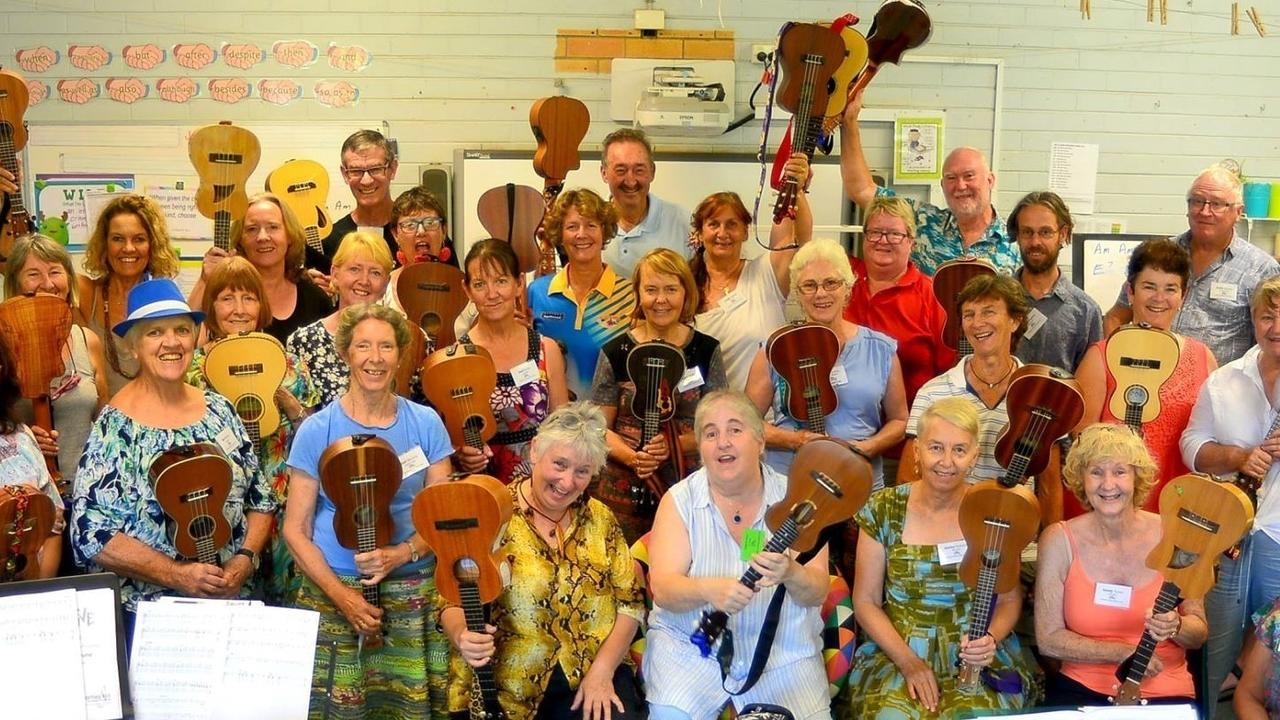How To Improve Your Ukulele Tone And Sound Better!

These days, many adult players are looking for more than just ukulele lessons. Sometimes they don’t know what ‘more’ is, but they know they want it. I believe that a place to start is helping students to identify what to listen for and as a consequence, to learn how to improve their ukulele tone!
Getting started
So, where to start on this listening and tone journey to sound better on the ukulele? The C scale, of course! My current group, The Valla Beach Garage Band, play this scale often – backwards, forwards, inside-out and upside-down. However, with a particular focus on tone, I provided them with a practice sheet of graded C scale exercises. At the beginning of each session we spent five minutes working on these emphasizing accuracy, fluency and tone.
‘It’s never too early to insist on a warm, full tone.’ (Hill and Doane, 2009, Ukulele in the Classroom)
For some students progress was slow and I realized that a key element was missing. Few of them appeared to understand the concept of tone quality. They knew the notes and could play them fluently, but were not really conscious of the sounds they were creating. They were hearing it but not listening in a musical way.
Timing
As a group we began identifying and listing for reference, attributes that contribute to developing a ‘warm, full tone’ and consciously focussing on them as they emerged in our weekly workshops. The first focus was TIMING. Were the left and right hands synchronized so that movement from one note to another was smooth and seamless? Were students placing their picking fingers on the next string to be plucked before the last note had rung out fully? Were they lifting their fretting fingers before the note had finished ringing?
Connecting and legato playing
This increasing accuracy of right-and-left-hand timing led to the notion of creating CONNECTION between notes (when desired). Connection led to an understanding of the term LEGATO or ‘tied together’ playing, and smooth transition from one note to the next. One of my students described this critical understanding of timing and connection as: ‘Oh! You mean I have to keep my finger on the string to make the note last before I change?’ It’s important not to make the assumption that everyone knows and understands these concepts. Most appreciate having it pointed out, and it’s reinforced in Ukulele in the Classroom: To keep a note ringing, hold your fretting finger firmly in place on the fret board.

I observed that some group members were playing their instruments with what I call ‘limp fish fingers' which can have a big effect on how the ukulele sounds. Therefore, the group’s next listed item was INTENT. Here the focus is on playing with the aim of creating a pleasing tone that can be heard clearly. Importantly, playing with confidence and intent can show the beauty, excitement, sadness, comedy or passion of a piece of music, especially welcome in performance. This cannot be done with limp fish fingers!
Musicality takes shape!
Through continuing discussions, the group added MUSICALITY to our list of tone-enhancing skills: playing with expression, as opposed to playing mechanically. This led to adding DYNAMICS to our scales and melodies, playing softly or loudly, staccato or smoothly, as suggested in Book 1 and learning how to add vibrato to notes when required.
The list we devised could, overall, be headed Playing Musically, with Tone at the top. However, it was more the process of the jointly created list and addressing the attributes as they arose that created an atmosphere of cooperative and purposeful learning. Our list is displayed and referred to frequently. The students in the class are now much clearer on what they want from their ukulele lessons. Not just to learn ‘songs and tunes’ but to learn how to improve their tone and sound better musically. In my experience, exploring a teaching goal co-operatively can be a powerful teaching tool.
By Cathy Welsford
Cathy Welsford is a community musician who lives in Valla Beach NSW Australia. She is an experienced teacher, performer, recording artist and event organizer. www.thewildwomenofanywherebeach.net & www.vallabeachukulelecamp.net
Stay in the Uke Loop!
Subscribe to the Uketropolis Gazette. Free arrangements, tips, interviews and more delivered to your inbox.


